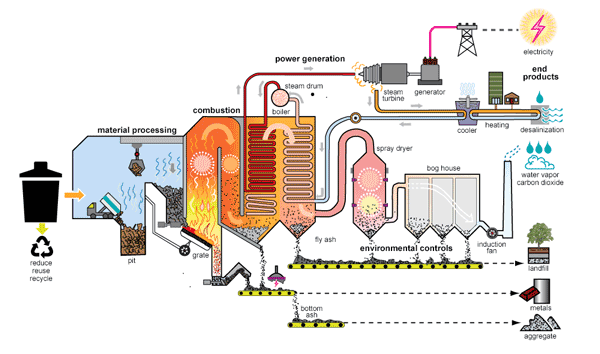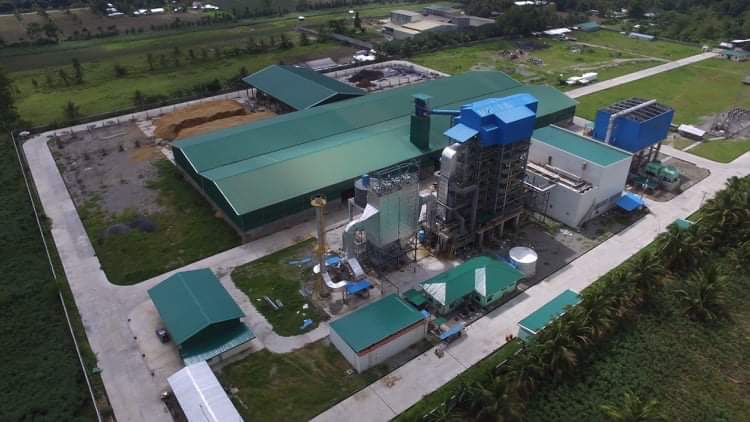SERVICES
Waste to Energy Projects
How Waste-To-Energy Plants Work
Waste-to-energy plants burn municipal solid waste (MSW), often called garbage or trash, to produce steam in a boiler that is used to generate electricity.
MSW is a mixture of energy-rich materials such as paper, plastics, yard waste, and products made from wood. For every 100 kgs of MSW, about 85 Kgs can be burned as fuel to generate electricity. Waste-to-energy plants reduce 2,000 Kgs of garbage to ash weighing about 300 Kgs to 600 Kgs, and they reduce the volume of waste by about 87%.
There are different types of waste-to-energy systems or technologies. The most common type used in the Global is the mass-burn system, where unprocessed MSW is burned in a large incinerator with a boiler and a generator for producing electricity (see illustration below). Another less common type of system processes MSW to remove most of incombustibles materials to produce refuse-derived fuel (RDF).
A mass-burn waste-to-energy plant

The process of generating electricity in a mass-burn waste-to-energy plant has seven stages:
- Waste is dumped from garbage trucks into a large pit.
- A giant claw on a crane grabs waste and dumps it in a combustion chamber.
- The waste (fuel) is burned, releasing heat.
- The heat turns water into steam in a boiler.
- The high-pressure steam turns the blades of a turbine generator to produce electricity.
- An air pollution control system removes pollutants from the combustion gas before it is released through a smoke stack.
- Ash is collected from the boiler and the air pollution control system.

